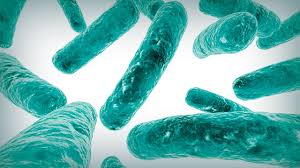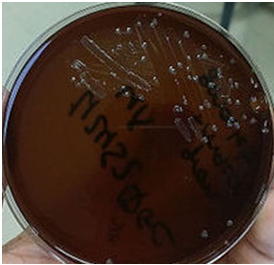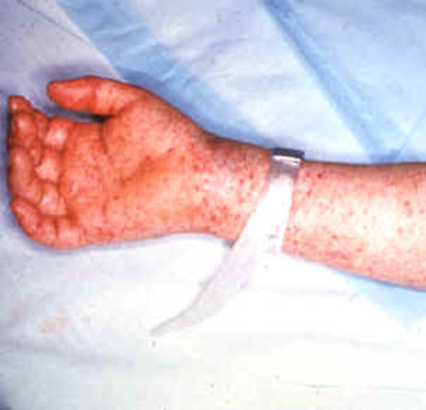Bacterial pathogens that cause infections in humans have innate characteristic mechanisms with which they use to suppress the immune response of their host in their bid to establish a disease process.
Initiation of an infectious process leads to the development of signs and symptoms in the human host, and these syndromes helps to announce the presence of a bacterium or group of bacteria that are responsible for the disease process. Some of the basic characteristics of pathogenic bacteria are as follows:
COLONIZATION
Colonization is the first stage of bacterial infection. It is the establishment of a bacterial pathogen at the appropriate site of entry into the host.
Portal of entry of a pathogen into the body of a host may include the nose, mouth, eyes, ear, vagina, or broken skin.
Bacterial pathogens usually colonize host tissues that are in contact with the external environment, and this makes it easier for the microbe to penetrate host cells and tissues in order to start the process of disease development.
TRANSMISSIBILITY
Pathogenic bacteria have the ability to be transferred from one person to another through direct body contacts, indirect body contacts, and feacal-oral route, through the bite of an insect vector or through airborne means.
Fomites and droplet infections can also transfer pathogenic bacteria from one individual to another. Some bacteria species produce sporeswhich allow them to withstand harsh conditions until they find a suitable environment (e.g. the human body) where they can thrive effectively and dissipate their deleterious activities.
Other infections can also be acquired by visiting or staying in certain places (e.g. hospital environments where nosocomial bacteria can be picked up). Pathogenic bacteria can also cross the placenta of a pregnant woman and go on to infect the foetus, and they are a source of concern in hospital wards and operating rooms where they cause a range of infectious diseases.
ADHERENCE
Adherence is the process by which pathogenic bacteria attaches itself to the body surfaces of its human host. The word adherence can also be used synonymously with attachment and adhesion. Bacteria produce chemical substances (e.g. adhesins) that allow them to bind specifically or non-specifically to surfaces (both inanimate and animate).
Adhesins are macromolecules that bind a bacterium to a specific surface either in vivo or in vitro.The binding of pathogenic bacteria to the cell of a human host is a key requirement for disease development. Adhesion of bacterial cells to implants in the body of a human host (e.g. catheters) promotes the formation of biofilms which is of medical importance.
In other words, for a bacterium to be able to initiate a disease process in a human host, it must first of all attach successfully in order to release its virulence factors that promote its injurious effects in the host.
TOXIGENICITY
Toxigenicity is the ability of bacteria to produce toxins that contribute to the development of a disease. Toxins are products of microbes which at low concentrations act on cells or tissues of a host to cause systemic damage. Pathogenic bacteria are known for their ability to produce a wide variety of toxins upon invading a host cell, and these substances helps to increase their pathogenicity and virulence.
Toxins, when produced, may be transported by blood and lymph fluids; and they cause cytotoxic effects at tissue sites distant from the original point of invasion or growth of the bacteria producing them. Toxigenicity or toxigenesis is one of the qualities of pathogenic bacteria which help to increase their pathogenicity and virulence. The toxins produced by pathogenic bacteria can be of two types: endotoxin (which are intracellular and are not elaborated by living intact cells) and exotoxin (which are extracellular and are elaborated by living cells).
Endotoxins are cell-associated toxins, and they are released by a dead bacterial cell. They are lipopolysaccharides (LPS), and are located on the outer membrane of Gram-negative bacteria. Exotoxins are produced by a living bacterial cell, and they are usually proteins that act enzymatically. Bacteria species that produce toxins include Clostridium, Corynebacterium, Vibrio, Shigella, Bordetella, Escherichia, Pseudomonas Bacillus and Staphylococcus.
PATHOGENICITY
Pathogenicity is simply defined as the mechanism of infectious disease development caused by a microbe (in this case a pathogenic bacterium) in a human host. It is the structural and biochemical mechanisms whereby pathogenic bacteria cause disease in a human host.
Pathogenicity is the ability of a microbe to cause disease in a host. Certain features of pathogenic bacteria that help to enhance pathogenicity include fimbriae, pili, cell wall components, LPS and capsules.
VIRULENCE FACTORS
Virulence factors are microbial products (e.g. toxins) that enhances the degree of pathogenicity of a microbe in ah host. It is the capacity of a bacterial pathogen to cause disease.
A virulent bacterial pathogen causes severe symptoms of a disease than a less virulent microbe in the same individual.
Virulence is usually the combination of invasiveness, toxigenicity and the state of immunity of the host in relation to the infecting bacterial pathogen.
EVASION OF HOST’S IMMUNE SYSTEM
Pathogenic bacteria have intrinsic factors that allow it to evade the immune system of a host.
A pathogenic bacterium has the potential to produce disease in a human host, but it will only do so if it has enough virulence factors or power to enter the host cells/tissues and overcome its defense mechanisms.
Otherwise, the immune system of the host will defend against the invading bacterial pathogen, thus restoring the body to its normal function.
INVASION
Pathogenic bacteria must be able to enter its host tissues or cells, multiply and spread to other nearby cells in order to properly establish a disease process.
References
Brooks G.F., Butel J.S and Morse S.A (2004). Medical Microbiology, 23rd edition. McGraw Hill Publishers. USA. Pp. 248-260.
Madigan M.T., Martinko J.M., Dunlap P.V and Clark D.P (2009). Brock Biology of microorganisms. 12th edition. Pearson Benjamin Cummings Publishers. USA. Pp.795-796.
Prescott L.M., Harley J.P and Klein D.A (2005). Microbiology. 6th ed. McGraw Hill Publishers, USA. Pp. 296-299.
Ryan K, Ray C.G, Ahmed N, Drew W.L and Plorde J (2010). Sherris Medical Microbiology. Fifth edition. McGraw-Hill Publishers, USA.
Singleton P and Sainsbury D (1995). Dictionary of microbiology and molecular biology, 3rd ed. New York: John Wiley and Sons.
Talaro, Kathleen P (2005). Foundations in Microbiology. 5th edition. McGraw-Hill Companies Inc., New York, USA.
Discover more from Microbiology Class
Subscribe to get the latest posts sent to your email.





